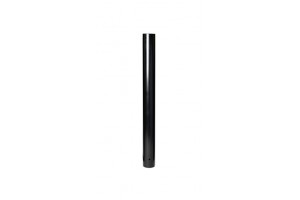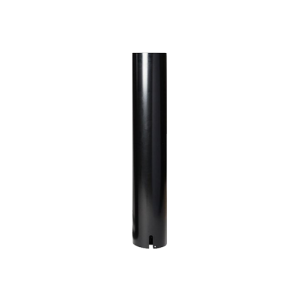CRASH RATED BOLLARDS: ASTM F3016 CRASH TESTED
TrafficGuard ®, Inc drawing on 20 + years of industry experience, is the first bollard company to test to ASTM F3016 as well as the first to offer crash tested and crash rated product that meets ASTM F3016.
FAQs
WHAT'S A CRASH RATED BOLLARD?
STOREFRONT VEHICLE INCURSIONS
- Increasingly common are vehicle incursions where a driver inadvertently, or in some cases deliberately penetrates a storefront. According the Storefront Safety Council:
- 60 + vehicle-intbuilding crashes each day
- 3,600 + injuries per year
- 500 deaths per year
- While these numbers are rough estimates, a simple google search for shows the scope of the issue, with vehicle incursion incidents nationwide.
- The lives of employers, employees and customers are increasingly at risk.
- Business owners and government agencies are being exposed to significant liability.
- Protecting storefronts based on “best practices” will no longer be enough.
- An ASTM committee has developed & approved ASTM F3016, Surrogate Testing of Vehicle Impact Protective Devices at Low Speeds that aims to address these risks.
- With the implementation of the new standard, the responsibility to protect vulnerable store fronts and seating areas with crash tested and crash rated bollards or other devices will fall on commercial real estate, retail owners and government agencies.
- Incentives through insurers to implement crash tested and crash rated protection will also likely increase.
- COVID19 has further upped the exposure for these businesses and agencies to provide a safe environment for their employees and customers.
ABOUT ASTM F3016
- The ASTM F3016 standard details a testing method to determine a bollards ability to stop a 5,000 lb test vehicle at 10, 20 and 30 MPH.
- There are two passing penetration ratings; P1 & P2. P1 details a dynamic penetration of less than 1’. P2 details a dynamic penetration of less than 4’.
- Recommended spacing of bollards is no further than 48” from inside edge to inside edge between bollards.
- Bollard selection and placement decisions based upon site specific details and anticipated speeds shall be determined by the owner or their representatives.
- Consulting a traffic engineer may be advisable.
ASTM F3016 Crash Tested Bollard Purchase Checklist
- Request full-scale crash test summary from the bollard manufacturer that details actual test performance.
- Verify that the tests were conducted to the ASTM F3016 standard at an accredited testing facility. Beware of unverifiable “independent” tests.
- Finite engineering analysis is not equivalent to an ASTM F3016 crash test.
- Your best security is to purchase the bollards directly from the manufacturer who has performed the testing.
- Require steel certifications from manufacturer to verify steel complies with what was actually tested.
ASTM F3016 Tested Bollard Installation Checklist
Prior to any payment to the contractor for construction you should require
- Steel certifications from the rebar manufacturer
- Concrete specifications from the ready mix supplier
- Photos from the actual construction for each step – showing the tape measure in photos
- Site excavation – verifying depth
- Rebar photos of layout before concrete is poured
- Photos of the actual pour occurring




![10 MPH Fixed Embedded Bollard – Carbon / Powder Coated [RFP5560R S10] 10 MPH Fixed Embedded Bollard – Carbon / Powder Coated [RFP5560R S10]](/media/com_eshop/products/resized/astm-fixed-5-1-300x300.jpg)
![10 MPH Fixed Embedded Bollard – 304 Stainless, #4 Brushed Finish [RFP5560R S10 S] 10 MPH Fixed Embedded Bollard – 304 Stainless, #4 Brushed Finish [RFP5560R S10 S]](/media/com_eshop/products/resized/fixed-ss-5-300x300.png)
![10 MPH Removable Bollard – Carbon / Powder Coated [HL2005 S10] 10 MPH Removable Bollard – Carbon / Powder Coated [HL2005 S10]](/media/com_eshop/products/resized/astm-removable-5-1-300x300.png)
![10 MPH Removable Bollard – 304 Stainless, #4 Brushed Finish [HL2005 S10 S] 10 MPH Removable Bollard – 304 Stainless, #4 Brushed Finish [HL2005 S10 S]](/media/com_eshop/products/resized/removable-ss-5-300x300.png)
![20 MPH Fixed Bollard – Carbon / Powder Coated [RFP8860R S20] 20 MPH Fixed Bollard – Carbon / Powder Coated [RFP8860R S20]](/media/com_eshop/products/resized/astm-fixed-8-20-mph-product-300x300.png)
![20 MPH Fixed Bollard – Stainless [RFP8860R S20] 20 MPH Fixed Bollard – Stainless [RFP8860R S20]](/media/com_eshop/products/resized/fixed-ss-8-20-mph-142x600-1-300x300.png)
![20 MPH Removable Bollard – Carbon / Powder Coated [HL2008 S20] 20 MPH Removable Bollard – Carbon / Powder Coated [HL2008 S20]](/media/com_eshop/products/resized/astm-removable-8-product-300x300.png)
![20 MPH Removable Bollard – Stainless [HL2008 S20] 20 MPH Removable Bollard – Stainless [HL2008 S20]](/media/com_eshop/products/resized/removable-ss-8-overview-142x600-1-300x300.png)
![30MPH Fixed Embedded Bollards [RFP8660RH S30] 30MPH Fixed Embedded Bollards [RFP8660RH S30]](/media/com_eshop/products/resized/astm-fixed-8-product-300x300.png)
![30MPH Fixed Stainless Bollards [RFP 8660 H S S30] 30MPH Fixed Stainless Bollards [RFP 8660 H S S30]](/media/com_eshop/products/resized/fixed-ss-8-overview-300x300.png)
![30 MPH Helix Lock Removable Bollards [HL2008H S30] 30 MPH Helix Lock Removable Bollards [HL2008H S30]](/media/com_eshop/products/resized/astm-removable-8-product-1-300x300.png)
![30 MPH Stainless Removable Bollards [HL2008RH S30] 30 MPH Stainless Removable Bollards [HL2008RH S30]](/media/com_eshop/products/resized/image_61685cc3f105a_removable-ss-8-overview-142x600-1-300x300.png)
